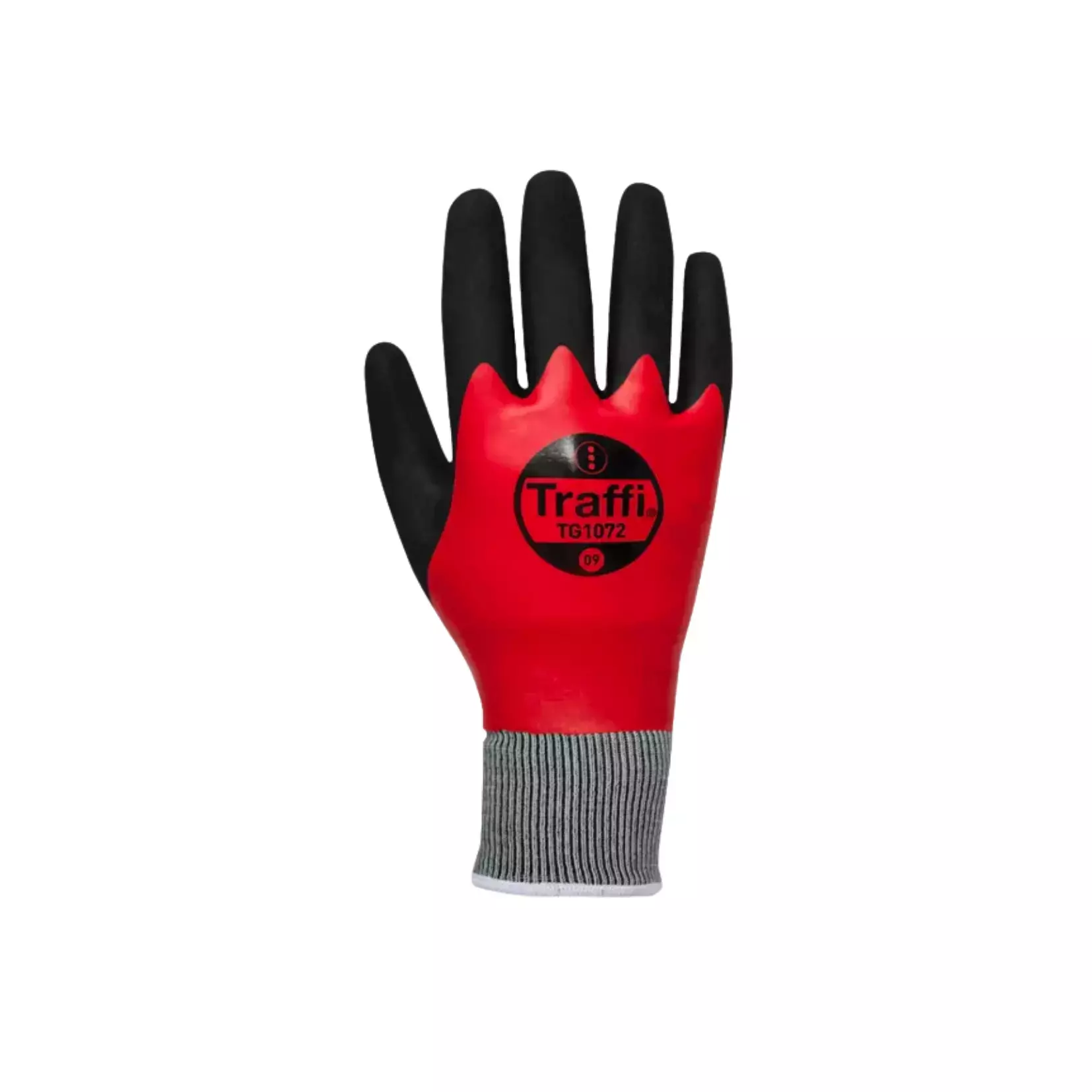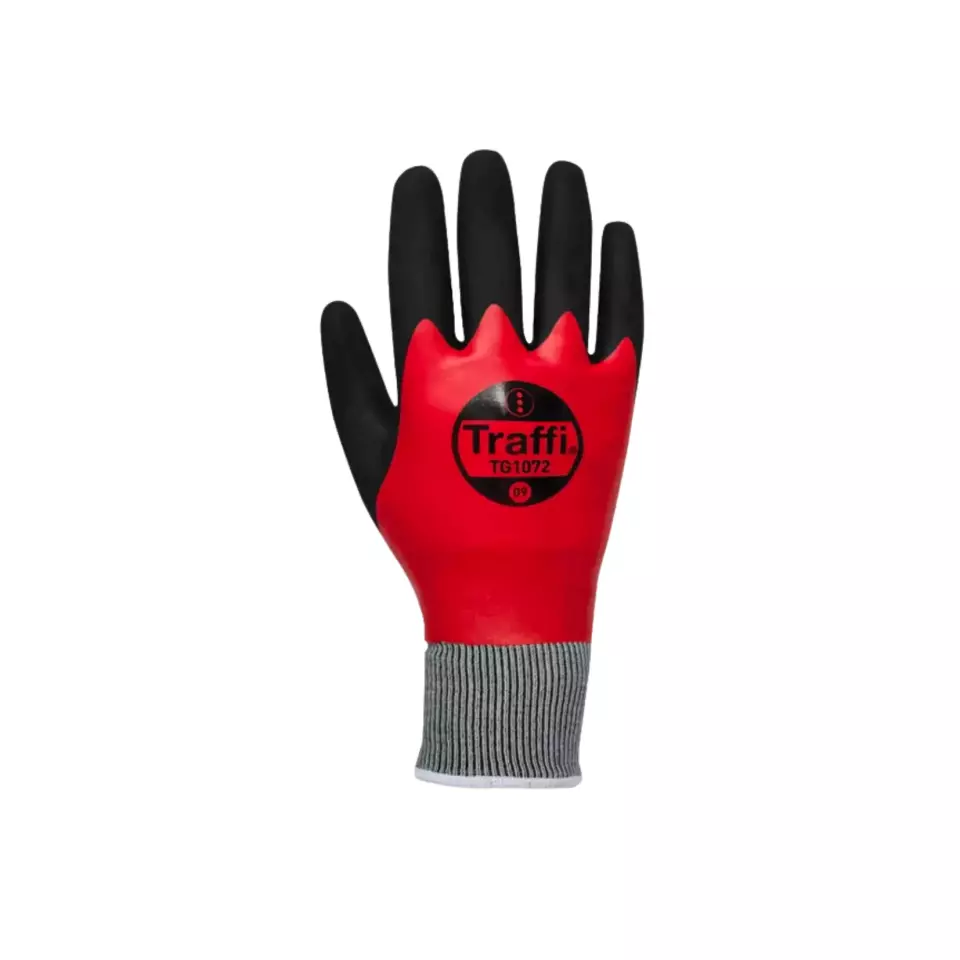
Features You'll Love

Cuff Style · Knit
Determines how the glove secures around the wrist, affecting fit, comfort, and protection coverage at the wrist area.

Coating Material · Acrylic, Nitrile
Traffi
Traffi logo
Double Dipped Cut Level A Safety Glove, 5 pairs
Traffi
Double Dipped Cut Level A Safety Glove, 5 pairs
Traffi logo
4.5 / 5
32,30 €
35,86 €
Price per 5 pairs
6,46 € / pair
Estimated delivery: Mon Nov 24 - Wed Nov 26
Choose size
Shipping fee is 4,74 € for orders under 150,00 €
Features You'll Love

Cuff Style · Knit
Determines how the glove secures around the wrist, affecting fit, comfort, and protection coverage at the wrist area.

Coating Material · Acrylic, Nitrile
Product description
The product description has not been specified